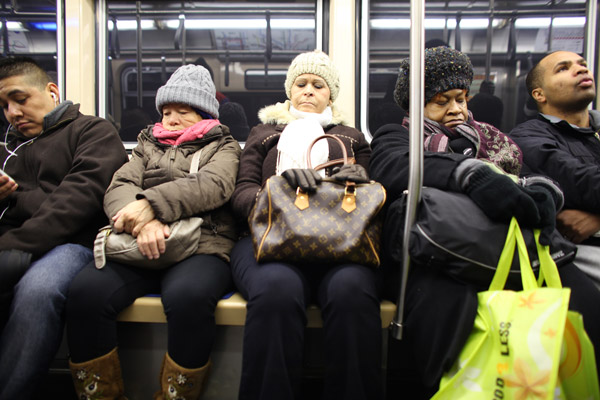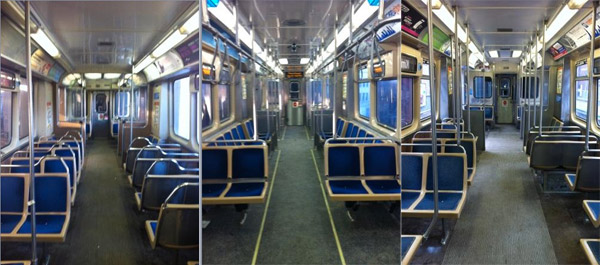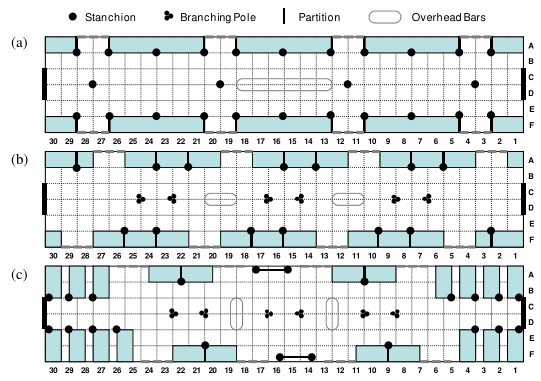
Photo: Andrew Johnston/Chicago Tribune
People / Sitting between people / Are the unhappiest people in the world.
Yesterday, my colleague Harry Sawyers mentioned that the CTA is asking Chicagoans what kind of El cars they want to ride. As a good citizen, I took the survey.
You're given three seating arrangements to rate and comment on. For lack of better terms, they're Chicago-style, New York-style, and "varying seating."

My instinct was for the third arrangement, as a balance between standing/exiting room and seating, as well as more poles and no straps. And there might be something to that. The NYC Transit Authority recently did an observational study of New York subway cars, and their findings are mostly intuitively obvious.
* Riders hate middle seats.
* Riders prefer poles to straps.
* Riders don't have much preference for transverse (Chicago style) over longitudinal seats (New York style), but they much prefer window seats over aisle seats, even in New York, where it's more subway than elevated train.
Their recommendations:
* "Longitudinal seating [i.e. photo #2] maximizes total combined seated and standing capacity, but 1+1 transverse [photo #3] seating provides customer-preferred window seats."
* "2+2 or 2+1 transverse seating [all photos above] should be avoided in urban environments because aisle seats may create blocking problems for both window seats and standees wishing to utilize the space."
* "Where possible, designers should avoid creating 'middle seats'; riders dislike them and they will rarely get used—many will stand rather than sit in middle seats. Partitions, poles, handrails, or even subtle visual cues like contoured seats or small gaps can segregate otherwise long benches, although physical barriers might be most effective."
In that sense, the third, "varying seating" option isn't too bad. It provides "customer-preferred window seats"; it minimizes 2+2 transverse seating; and there aren't any middle seats.
Here are their hypothetical subway-car layouts:

A couple things to note. In the last two, the doors are asymmetrical:
when cars are further subdivided into those having symmetrical and asymmetrical door arrangements, “door” standing spaces are occupied more quickly on symmetrical cars than asymmetrical ones…. Symmetrical door arrangements may encourage standees to crowd door areas, exacerbating loading problems. Visually, asymmetrical arrangements make car interiors look a little more open, and perhaps more inviting—hence luring passengers away from doors with potential dwell time, loading, and capacity utilization benefits.
And the last one has a bit of everything: longitudinal seating, transverse window seating, poles, overhead bars… everything except "undesirable" middle seats. If Jeff Ruby is any indication, part of the problem is novelty: "Bombardier says they will last for 40 years, and it may take half that time to unlearn our habits." In that case, the varying-seat car would be a baby step towards our longitudinal, cattle-car future.


